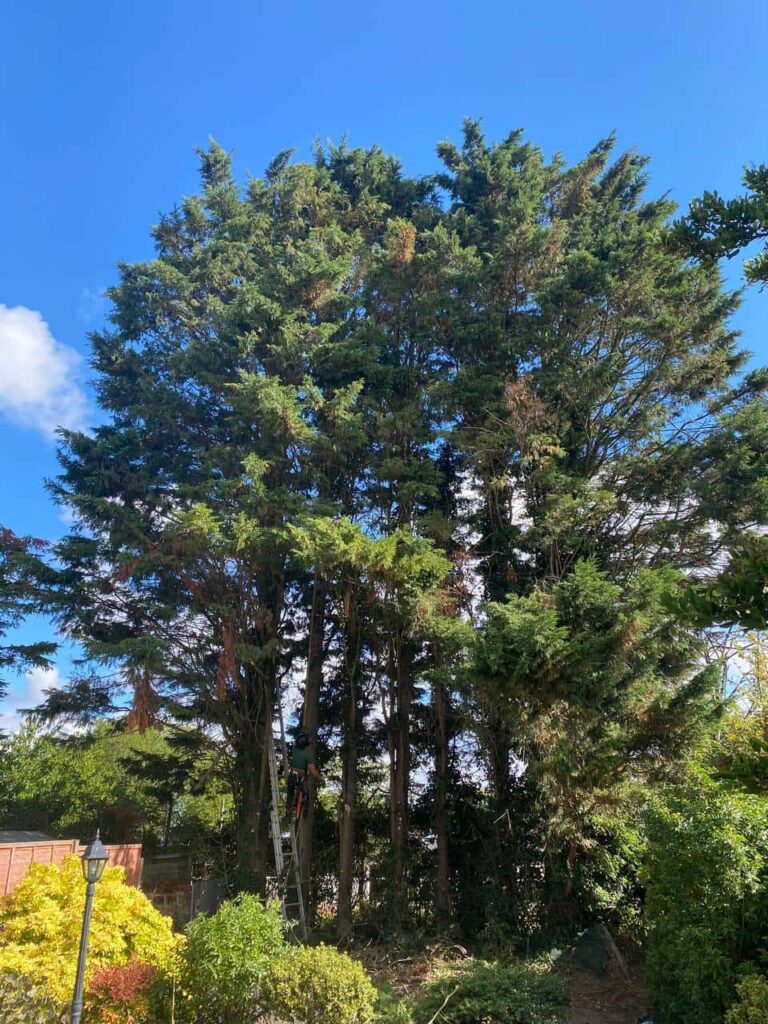Introduction
Trees bring structure, shade, and seasonal beauty to any landscape. However, even the healthiest specimens can outgrow their surroundings or develop problems over time. When this happens, crown reduction—a careful process that reduces the size and spread of a tree’s upper branches—can offer a practical, non-invasive solution.
At Worlingworth Tree Surgeons, we regularly carry out crown reductions for homeowners, landowners, and businesses throughout Worlingworth and wider Suffolk. If you’re unsure whether your tree could benefit from this type of pruning, here are four key issues that might signal it’s time to take action.
Key Takeaways
- Crown reduction addresses structural imbalance, shading issues, and safety concerns
- Helps maintain tree health while preventing interference with nearby property
- Encourages controlled growth and reduces wind resistance
- Protects trees without resorting to removal
1. Overextended or Imbalanced Branches
A Sign of Structural Stress
As a tree matures, its limbs can extend beyond their natural limit, becoming too long or heavy. This puts the tree at risk of limb failure, particularly in strong winds or storms. If your tree appears uneven, with weight concentrated on one side, or you notice sagging or cracked limbs, this may be a sign the crown is too large for the tree to support.
Crown reduction:
- Lightens load-bearing branches
- Re-establishes a stable, balanced canopy
- Reduces the risk of falling limbs
It’s especially valuable for older or storm-damaged trees that require support without drastic intervention.
2. Excessive Shading of Gardens or Homes
Blocking Natural Light and Limiting Plant Growth
Dense tree canopies can reduce the amount of light reaching your lawn, garden beds, or even your home’s interior. If you’ve noticed a sudden drop in sunlight or struggling plants below a spreading tree, crown reduction can offer a well-judged solution.
Benefits include:
- Increased sunlight in shaded garden areas
- Better growth for lawns, hedges, and flowerbeds
- More natural light through windows and conservatories
It’s a particularly useful option for smaller gardens in Suffolk, where space and light are at a premium.
3. Encroachment on Property or Utilities
When a Tree Becomes a Risk to Buildings and Services
Trees located near buildings or utility lines can become problematic as they grow. Branches may overhang roofs, touch windows, interfere with phone lines, or even risk damage to walls and outbuildings.
Crown reduction helps to:
- Control outward spread of the canopy
- Prevent direct contact with nearby structures
- Minimise future repair or clearance work
It’s an ideal approach for managing large trees in built-up or boundary-adjacent areas like those found in Worlingworth villages and properties.
4. Visible Damage or Tree Decline
A Warning That the Tree Is Under Strain
If your tree shows signs of dieback, disease, or storm damage in its upper canopy, it may be struggling to support its own growth. Splitting branches, dead wood, or erratic growth can all be signs of stress.
A professionally executed crown reduction:
- Removes hazardous or unhealthy branches
- Improves airflow and light penetration through the canopy
- Encourages recovery and healthier future growth
This helps the tree regain vitality without losing its structure or visual appeal.
Conclusion
Trees don’t always need to be removed when problems arise—crown reduction is often the most effective way to restore balance, safety, and health. Whether it’s about light, safety, or aesthetics, a professional reduction can extend your tree’s life while improving its relationship with the surrounding environment.
At Worlingworth Tree Surgeons, we offer tailored crown reduction services across Suffolk, with care, experience, and a commitment to best practice. Get in touch today to arrange an expert assessment and find out if crown reduction is the right solution for your tree.
Call us on: 01728 448 695
Click here to find out more about Worlingworth Tree Surgeons
Click here to complete our contact form and see how we can help with your tree needs.

